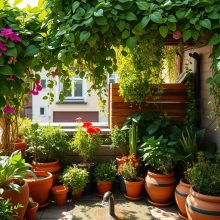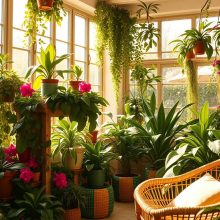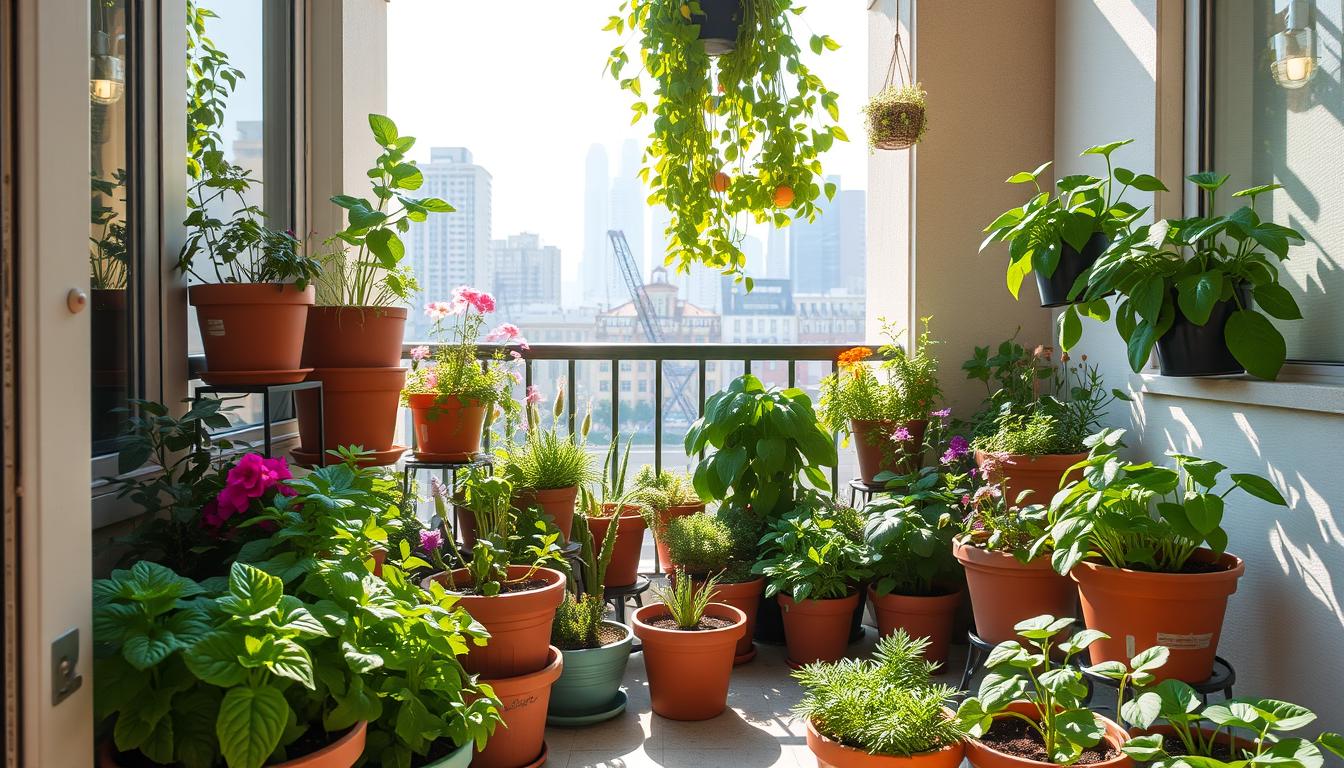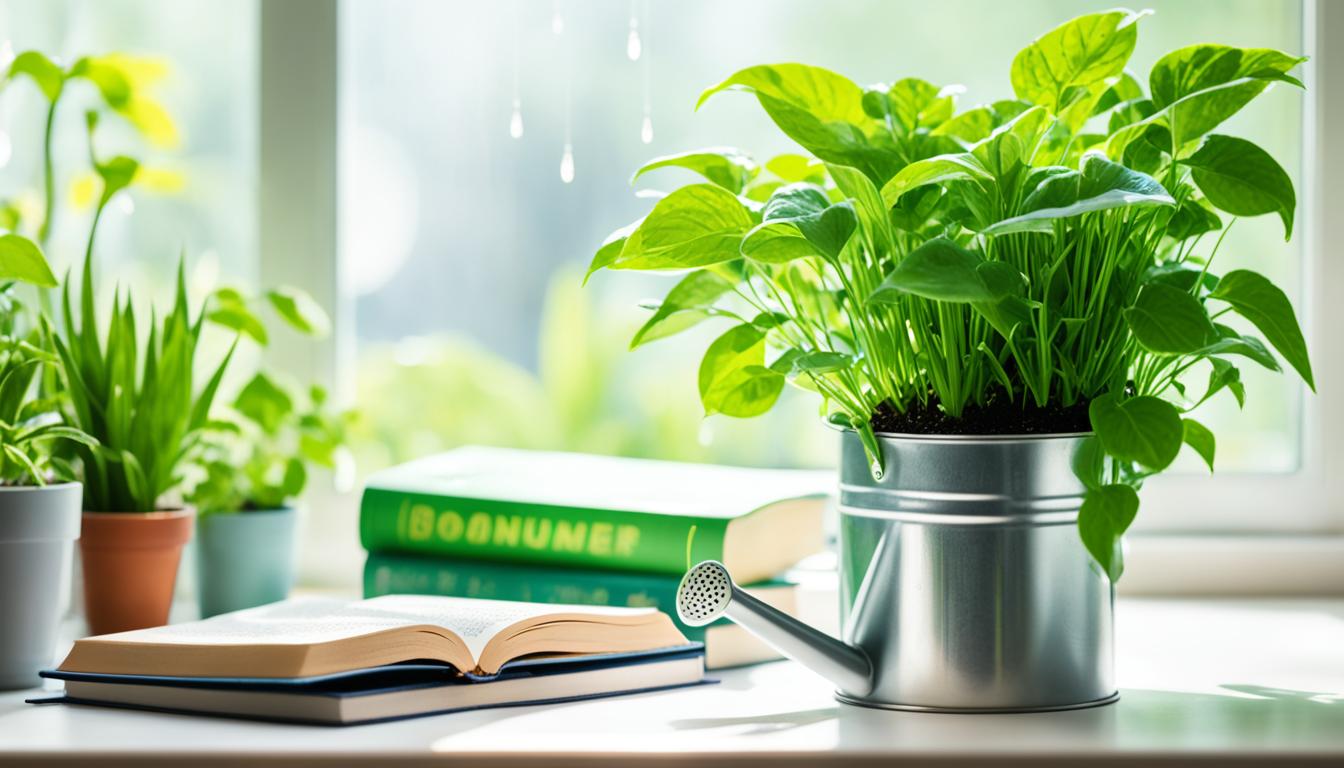Discover the Perfect Indoor Plants for Your Home
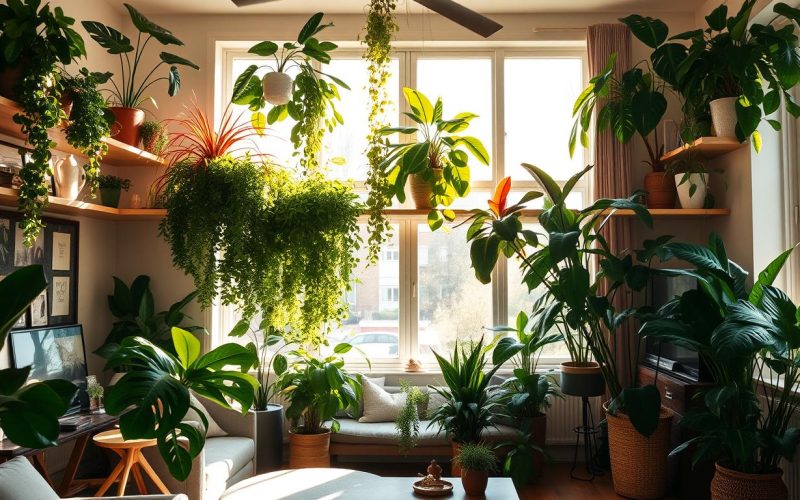
Indoor plants have become more than just decorations. They are key parts of modern homes. They make our spaces healthier and more lively, helping our bodies and minds.
Finding the right indoor plants can be tough, even for experts. With so many options, knowing what each plant needs is vital. This knowledge is the first step to success.
Whether you’re an experienced plant lover or just starting, this guide is for you. It will make exploring indoor plants easy and fun.
Key Takeaways
- Indoor plants improve air quality and reduce stress
- Different plants suit different home environments
- Proper plant selection depends on light and care requirements
- Indoor gardening can enhance mental health and home aesthetics
- Beginners can start with low-maintenance houseplants
Why Indoor Plants are Essential for Your Space
Indoor plants do more than just look good. They turn our homes and offices into lively, healthy places. They help our bodies and minds feel better. Learning about indoor plants can change how we see our living and work spaces.
Improving Indoor Air Quality
Houseplants clean the air we breathe. NASA found that some plants can remove up to 87% of bad air in just one day. These plants quietly make our air cleaner and fresher.
- Removes chemical pollutants like formaldehyde
- Increases oxygen levels
- Reduces airborne dust particles
Boosting Mood and Mental Health
Indoor plants do more than just look nice. Research shows they greatly improve our mental health. Taking care of plants lowers stress, boosts work performance, and brings peace to busy places.
- Decreases anxiety and depression symptoms
- Enhances cognitive function
- Promotes relaxation and emotional balance
Enhancing Aesthetic Appeal
Indoor plants add beauty to any room. They come in many styles, from simple succulents to lush green plants. They bring texture, color, and life to any space, making it special.
- Creates visual interest
- Softens architectural lines
- Adds natural color and dimension
Top Indoor Plants for Beginners
Starting your indoor plant journey can feel overwhelming. But, some amazing best indoor plants make it simple and fun. Beginners can transform their living spaces with a few resilient and attractive indoor plant ideas that require minimal maintenance.
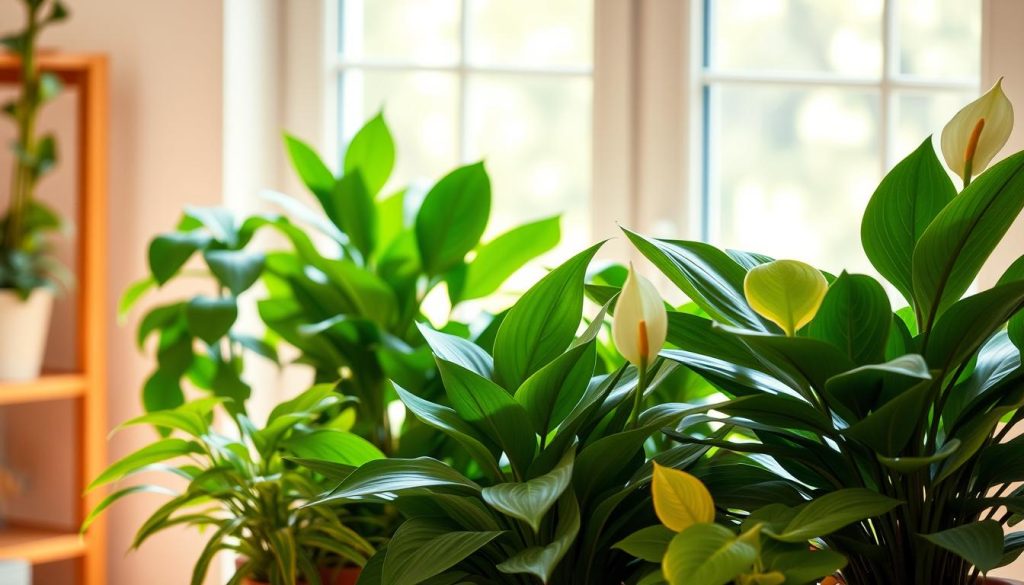
Selecting the right plants is crucial for new plant enthusiasts. Some species are forgiving and perfect for those just starting their indoor gardening adventure.
Snake Plant: The Indestructible Champion
Snake plants are a top choice for beginners. These tough plants thrive in various light conditions and can survive with minimal water. Their vertical, architectural leaves add a modern touch to any room.
- Tolerates low light environments
- Requires infrequent watering
- Purifies indoor air effectively
Pothos: The Versatile Trailing Beauty
Pothos is another fantastic option for indoor plant ideas. This adaptable plant can grow in hanging baskets or trail along shelves, creating stunning green displays with minimal effort.
- Grows quickly in different light conditions
- Easy to propagate
- Dramatic trailing or climbing growth
Peace Lily: Elegance and Simplicity
Peace lilies bring elegance to indoor spaces while remaining incredibly low-maintenance. These plants flourish in indirect light and signal when they need water by slightly drooping their leaves.
- Thrives in low to medium light
- Indicates watering needs through leaf movement
- Beautiful white flowers periodically bloom
Low-Light Indoor Plants
You don’t need bright windows to have green plants indoors. Some plants do well in low light, great for apartments and offices. They turn dark spots into lively green areas with little care.
Choosing the right plants for low light can brighten your space. These plants thrive in little light, adding beauty and function to your home.
ZZ Plant: The Ultimate Low-Light Champion
The ZZ plant is a top pick for low light. Its shiny, dark leaves can handle minimal indirect sunlight. Caring for a ZZ plant is easy:
- Needs only six hours of indirect light a day
- Water every two to three weeks
- Can handle irregular watering
- Loves temperatures between 60-75°F
Cast Iron Plant: Virtually Indestructible
The cast iron plant is tough and perfect for beginners. It grows slowly but can handle neglect and low light well.
Spider Plant: Versatile and Adaptable
Spider plants are great for low light too. They adjust to different light levels, making them ideal for indoor spots. They like humid places and can grow hanging offshoots, adding charm to any room.
High-Maintenance Indoor Plants to Challenge You
If you love indoor gardening and want a challenge, some plants are perfect. They need special care, lots of dedication, and a deep understanding of their needs.
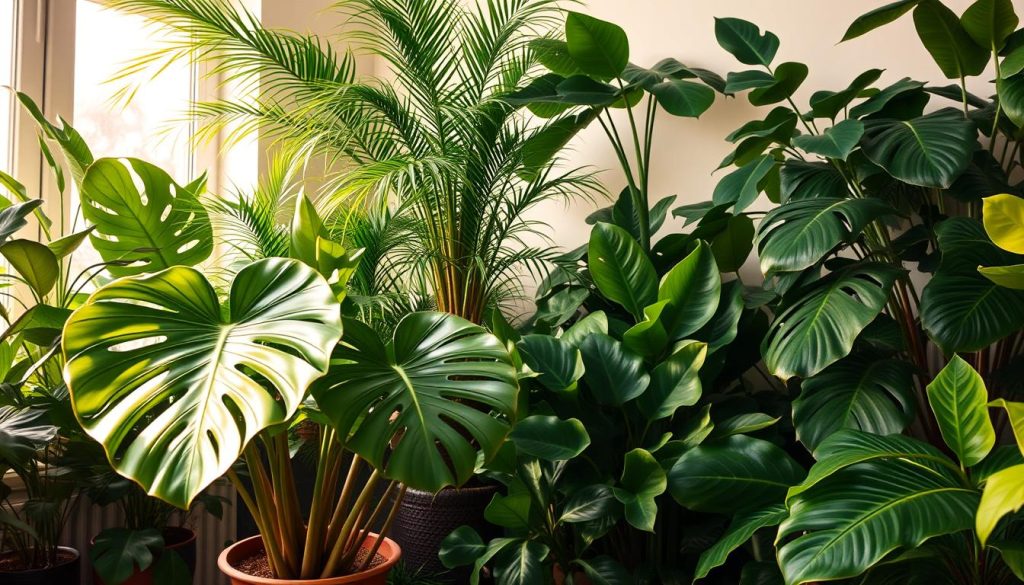
For those who enjoy advanced indoor gardening, these plants are ideal. They help you improve your plant care skills and create beautiful indoor spaces.
Fiddle Leaf Fig: The Temperamental Superstar
Fiddle leaf figs are known for being tough to care for. But, they reward those who take good care of them. They need:
- Bright, indirect sunlight
- Consistent temperature between 60-75°F
- Minimal drafts and temperature fluctuations
- Precise watering schedule
Bird of Paradise: Tropical Elegance Requires Expertise
This plant is dramatic and needs careful maintenance. To grow it well, you need:
- High humidity environments
- Abundant bright, filtered light
- Regular fertilization during growing seasons
- Protection from cold drafts
Orchid Care: Delicate Precision
Orchids are the most challenging plants for indoor gardening. To care for them, you need:
- Specific humidity levels
- Carefully controlled watering
- Specialized potting media
- Precise light exposure
These plants turn indoor gardening into an art form. They give experienced plant lovers a chance to show off their skills.
How to Choose the Right Indoor Plants
Choosing the right indoor plants is more than just picking something pretty. It’s about finding the perfect fit for your home and lifestyle. Understanding your space and what you can handle is the first step to successful plant care.
Assessing Light Conditions
Light is essential for plants to live. Different plants need different amounts of light:
- Low-light areas: Snake plants, ZZ plants
- Bright indirect light: Pothos, fiddle leaf fig
- Direct sunlight: Succulents, cacti
Understanding Your Lifestyle
Your daily life affects which plants you can care for. Think about these lifestyle factors:
- How much time you have for plant care
- How often you travel
- How experienced you are with plants
Plant Size Considerations
Space is important when picking plants. Look at your room size and choose plants that fit well. Small plants are great for tight spaces, while big rooms can handle bold, statement plants.
By matching your environment, lifestyle, and space, you’ll find the best indoor plants. These plants will not only survive but also flourish in your home.
Best Indoor Plants for Small Spaces
Even in tiny apartments or small offices, you can still have plants. The right indoor plants can make even the smallest areas look lush and vibrant. Look for plants that are small, easy to care for, and don’t need much space.
Compact Succulents: Miniature Marvels
Succulents are great for small spaces. They come in many shapes and sizes. They need little care and can grow well in small pots.
- Echeveria: Rosette-shaped succulents that fit perfectly on windowsills
- Haworthia: Compact plants with striking geometric patterns
- Jade Plant: Small, sturdy houseplants that grow slowly
Air Plants: Rootless Wonders
Air plants are perfect for small spaces. They don’t need soil and can be displayed in many ways. You can hang them in terrariums or use magnetic holders.
- Tillandsia ionantha: Tiny, colorful air plants
- Xerographica: Large, sculptural air plant variety
- Brachycaulos: Vibrant red-tipped air plant
Miniature Ferns: Delicate Green Companions
Small ferns add elegance to tiny spaces. They do well in hanging baskets or small pots. They bring lush greenery without taking up too much room.
- Button Fern: Compact and adorable houseplant
- Bird’s Nest Fern: Unique, nest-like growth pattern
- Maidenhair Fern: Delicate, feather-like fronds
Seasonal Care for Indoor Plants
Plant care changes with the seasons. Each season has its own challenges and chances for indoor plant care. Knowing how to adjust your care can help your plants thrive all year.
Winter Plant Care Strategies
Winter is tough for indoor plants. Most plants slow down during this time. Important winter tips include:
- Reduce watering frequency
- Keep plants away from cold drafts
- Maintain consistent indoor temperatures
- Provide indirect light sources
Spring Growth Techniques
Spring is a time of renewal for indoor plants. It’s great for growth strategies. Recommended steps include:
- Gradually increase watering
- Begin light fertilization
- Check roots for potential repotting
- Inspect plants for new growth
Summer Watering Methods
Summer brings high temperatures and light. Good summer watering methods prevent stress and dehydration. Watch soil moisture, use room temperature water, and adjust schedules for each plant.
Common Indoor Plant Care Mistakes
Indoor gardening can be tough, even for experts. Knowing common mistakes helps keep your houseplants healthy and lively. Many people unknowingly harm their plants, which can be very damaging.
To succeed in indoor gardening, you must pay close attention to your plants’ needs. We’ll look at the most common errors that can hurt your plants. We’ll also talk about how to avoid them.
Drowning Your Plants: The Overwatering Trap
Overwatering is the biggest mistake in indoor plant care. Many people water their plants too much, which hurts the roots. Succulents and cacti are very sensitive to too much water.
- Check soil moisture before watering
- Use well-draining potting mix
- Ensure pots have drainage holes
- Learn each plant’s specific water requirements
Pest Problems: Silent Destroyers
Ignoring pests can quickly ruin your indoor garden. It’s important to check your plants regularly to keep them healthy.
- Inspect plants weekly for signs of insects
- Isolate new plants before introducing them to your collection
- Use natural pest control methods when possible
- Remove infected leaves immediately
Fertilization: The Forgotten Nutrition
Not feeding your plants is another big mistake. Different plants need different nutrients and fertilization schedules to grow well.
- Research specific fertilization needs for each plant
- Use balanced, water-soluble fertilizers
- Follow recommended application rates
- Reduce fertilization during winter months
By avoiding these mistakes, you can have a beautiful indoor garden. It will add life and beauty to your home.
Resources for Indoor Plant Enthusiasts
Exploring indoor plant decor is a journey that never ends. It’s important to keep learning and connect with others who love plants. There are many resources out there to help you grow your knowledge and care for your plants better.
Online communities are great places for plant lovers to share and learn. Sites like Reddit’s houseplant forums and Facebook groups are full of helpful tips. They’re perfect for both newbies and seasoned gardeners to swap advice on plant care.
Digital Learning Platforms
For a deep dive into indoor plant decor, check out books and digital guides. Experts like Summer Rayne Oakes and the Missouri Botanical Garden share a wealth of knowledge. They cover everything from plant care to design tips.
Local Plant Resources
Don’t overlook local plant shops and nurseries. They offer hands-on learning and expert advice. The horticulturists there can suggest plants that fit your home and help you improve your gardening skills.
